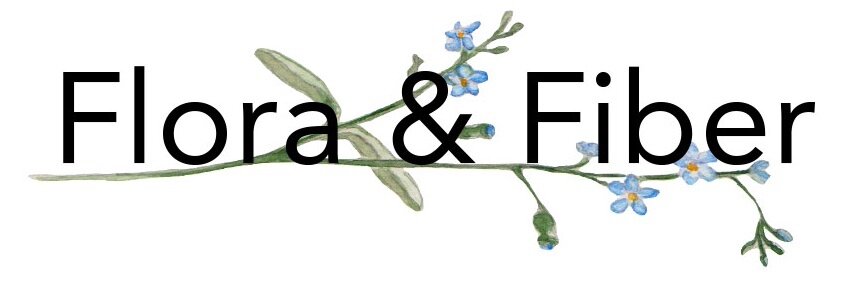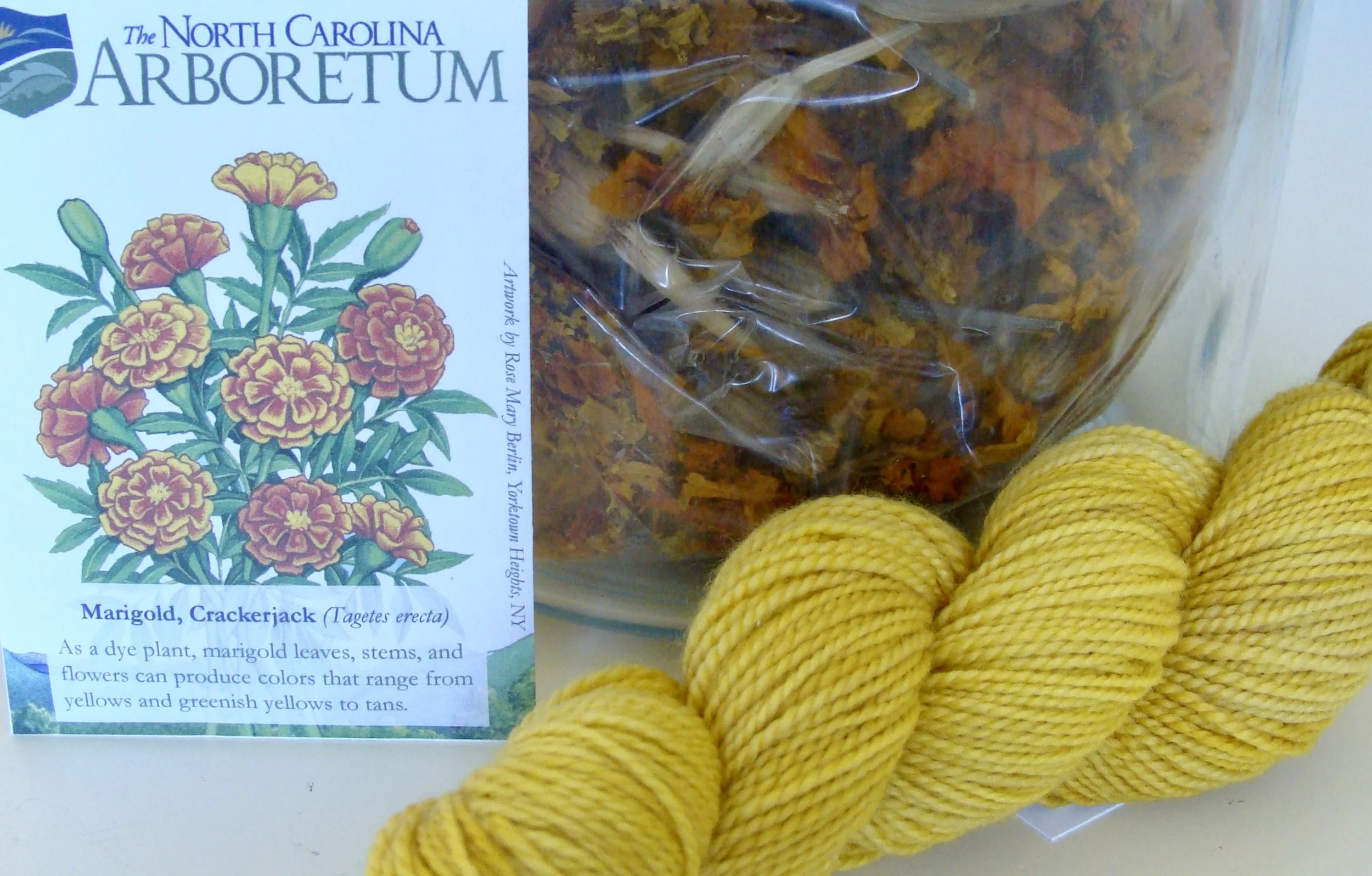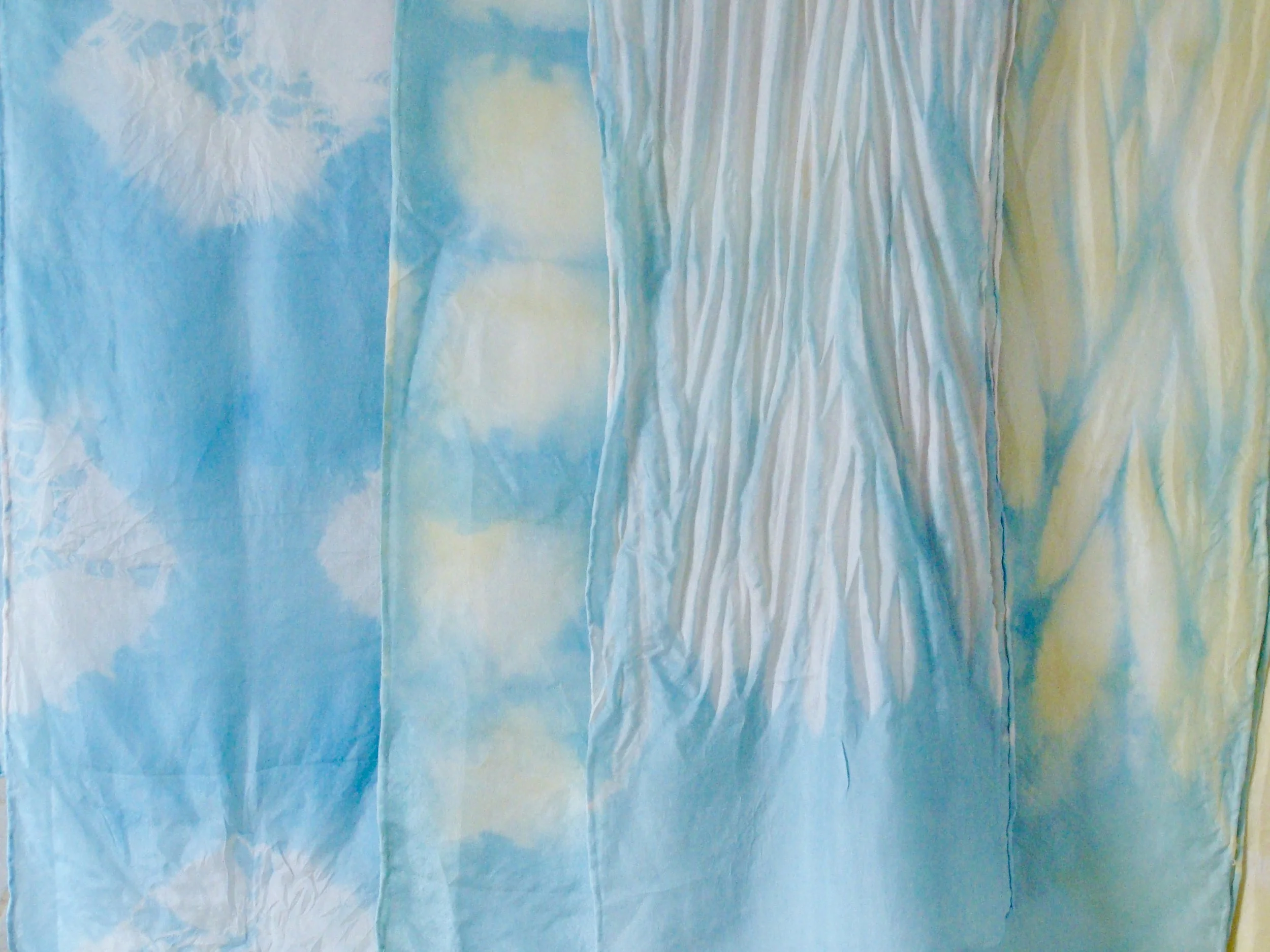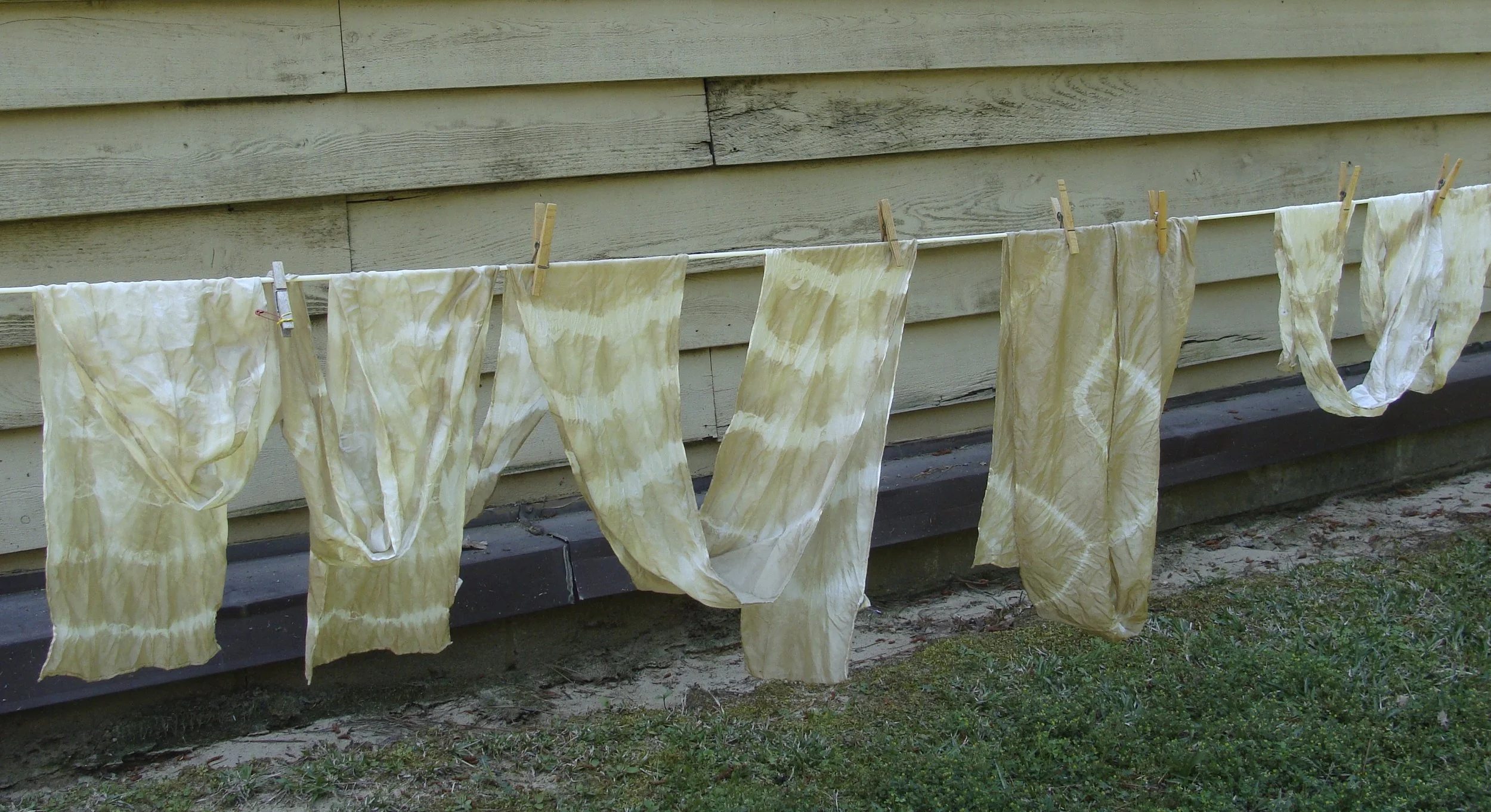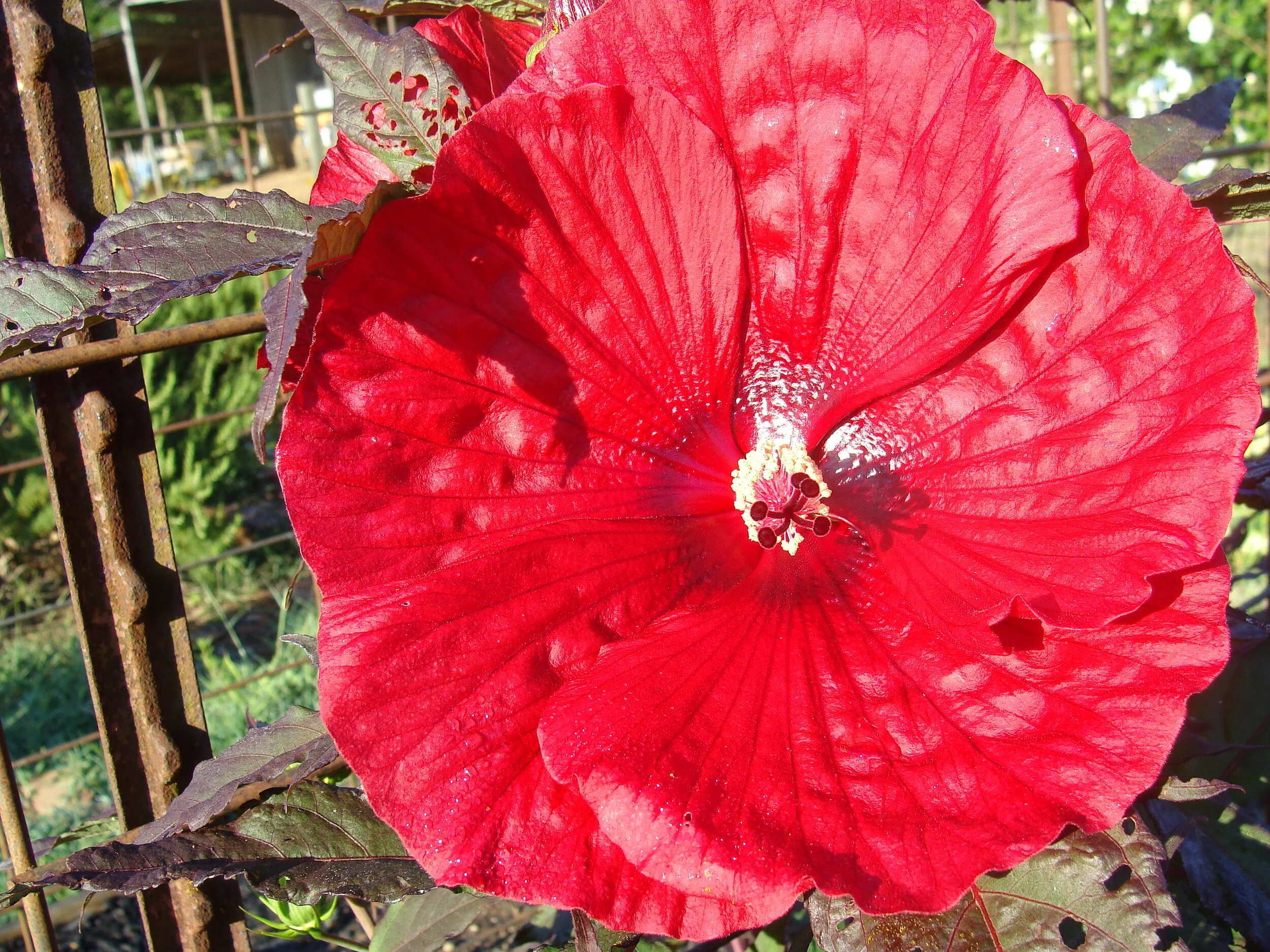Let's Dye . . . Marigold
Just like the previous posts for Let's Weave . . . and Let's Spin . . . , this is the start of the Let's Dye . . . series featuring my forays into Natural Dyeing.
There are several reasons I chose to begin this series with Marigolds First, I grew marigolds last summer specifically to use for natural dyeing (and I had a bumper crop!). Second, there is a lot of information about dyeing with marigolds found in almost any dye reference, be it in print or online. Next, I found the marigold extracting and dyeing process to be very easy. And finally, I loved the results (to dye for!). So marigolds fit the criteria I talked about in my last post.
marigolds in my dye garden
Marigolds (Tagetes spp.) are cheery annual flowers native to Mexico and South America, but now grown pretty much globally. They have rounded flower heads and pungent, dark green fernlike foliage. The tall, or African varieties have bright yellow or orange blossoms; growing to 3 to 5 feet tall. The dwarf, or French marigolds have smaller yellow, orange, rusty red, or bicolor blossoms on more compact plants. Both of these can be used for natural dyeing.
Marigolds are easily grown, desiring full sun. In my South Carolina dye garden, they needed occasional watering in hot, summer weather. They are generally pest-free and are often planted as companion plants in the vegetable garden because of their ability to repel nematodes. Marigolds are inexpensive and commonly found as plants in local garden centers or they can be simply grown from seeds. I direct sowed seeds in several beds in my dye garden in the Spring and had a plethora of blooms from midsummer until frost. The more flowers you pick, the more flowers are produced.
Natural dyeing references record many wildflowers and garden plants that produce yellow dyes. However, in going through these lists, marigolds are almost always listed as a favorite for producing rich vibrant yellows, green-yellows and oranges depending on the dye concentration and choice of mordant.
dried marigolds from my 2016 dye garden
The dyestuff consists of either fresh or dried flower heads and stems. I picked the flowers heads at their peak, trying to gather in the early morning. I then laid them on a screen in my greenhouse which provided a hot, dry environment. When thoroughly dried, I stored them in a plastic ziplock bag. I did not dye with them until now. Last year's crop worked great dried in this manner.
Dyeing with Marigolds
To extract the dye, add the flowers to a dye pot and cover with water. Bring to a simmer and allow to steep for half an hour. Strain off the colored dye liquid and add to the dye pot.
Add wetted fibers or fabric to the dye pot. Bring to a simmer and simmer until the desired shade is achieved; for me this was about 40 minutes.
Once cool enough to handle, I rinsed the silk scarves under cool water. I found that there was very little remaining marigold dye to rinse off. Hang to dry. The scarves dried quickly on my clothes line; probably in about 30 minutes. For the wool, I hung it until it cooled and then rinsed with water and hung to dry. My reason for waiting was to prevent felting which can occur when rinsing hot wool in cool water.
Notes
From my reading: "Flower heads or petals yield the most saturated colors. If the leaves and stems are also included, the color becomes less saturated." I used whole flower heads with about 1-2" of stem attached. I was pleased with my color results.
The amount of marigold, or any natural dye, is based on the weight of what you are dyeing. This is known as the 'weight of goods' or abbreviated WOG. The amount of dye stuff is expressed as a percentage of WOG. In the case of marigolds, I went with the recommendation of 20 -30% dried marigold to WOG. I had a total of 350 grams of wool yarn and silk scarves. So:
350 grams (WOG) x 25% = 87.5 grams of dried marigold.
The amount of water used whether to extract the dye or dye the fiber/fabric does not matter. It just needs to be enough water to cover the materials. That may seem odd, but it is the percent of the dye stuff (in this case marigold) to the amount of material to be dyed (WOG).
Some natural dyes require the fiber or fabric to be mordanted in order for the dye to remain lightfast and washfast, in other words, the color not to fade . A mordant, in this case alum (aluminum sulfate), was applied prior to placing the silk and wool in the dye bath.
***I am planning a full tutorial post on the basics of natural dyeing including equipment needed, fiber/fabric preparation, and mordanting. However, that's a little more technical post, and I wanted to start this series off with something a bit more colorful!***
I am very pleased with my hand dyed results from marigold. First, here's the 100% merino wool yarn.
check out the tags I designed!
Next, I overdyed the marigold with another natural dye. Below you see a gorgeous variegated yarn created by taking skeins of marigold (as above) and placing in a Saxon Blue (indigo) dye bath. (I'm planning a separate post on Saxon Blue.)
In the same dyepot as the wool yarn, I also dyed silk scarves. I found the color to be lighter on silk, but still quite beautiful, more of a lemon yellow. The three scarves on the right are all dyed from a second dye bath, hence they are even paler yellow. You may notice a pinkish tint on the middle scarf. This is from a second dyebath of cochineal (also a future post). On the far left is a scarf initially dyed in marigold, then refolded and overdyed in Saxon Blue.
The patterning on these scarves comes from a technique called Shibori. You guessed it, another future post.
Shibori - a Japanese dyeing technique that typically involves folding, twisting or bundling cloth and binding it, then dyeing it.
close-up of marigold hand dyed silk scarfs
After my natural dye workshops on Friday, I plan to add these and other hand-dyed silk scarves to my online shop. Check back if you're interested.
I'll close this post with a few resources I found helpful:
A Dyer's Garden by Rita Buchanan (link)
Indigo, Madder & Marigold by Trudy Van Stralen (I sell in my shop)
Natural Dyeing video by Dagmar Klos (link)
Overdyeing with Natural Dyes video by Dagmar Klos (link)


